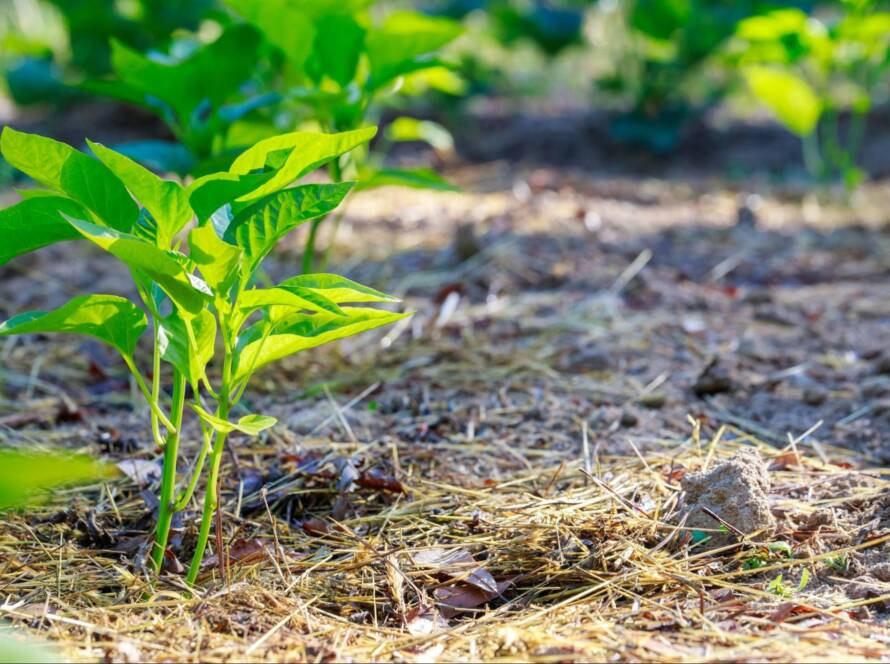The best time of year for sod installation depends on the type of grass, regional climate, and the readiness of your lawn. Timing directly impacts how quickly the sod takes root and how healthy it remains in the long term. Sod that’s installed at the wrong time can dry out, die off, or require far more care and cost. To get it right, you need to work with the natural growing season, not against it.
Understanding How Sod Installation Works
Sod installation is the process of placing pre-grown grass onto prepared soil to create an instant lawn. This living carpet needs time, moisture, and proper ground contact to develop strong roots. Without the right conditions, even the freshest sod won’t take hold. That’s why timing is everything; it sets the stage for healthy root growth and full coverage.
What Happens to Sod After It’s Installed
After sod is installed, it begins the rooting phase, which usually lasts two to three weeks. During this time, roots work to bond with the soil underneath, drawing nutrients and water. Moisture consistency is critical; too little causes drying, while too much can trigger rot. Weather plays a role here. If it’s too hot, cold, or windy, the sod won’t root properly. The blades may stay green for a few days, giving a false sense of progress. But real growth happens beneath the surface.
Why Timing Shapes Lawn Strength Over Time
Fast root development leads to turf that can handle stress, heat, and foot traffic. Slower growth leaves the lawn vulnerable to weeds, insects, and patchy coverage. Sod installed at the wrong time may survive, but won’t thrive. A weak root system will need more water and care throughout its lifespan. Conversely, sod planted during optimal growing conditions establishes faster and lasts longer with less maintenance.
Best Time for Sod Installation by Grass Type
The best time to install sod varies depending on the type of grass. Warm-season and cool-season grasses grow at different times and require specific temperatures to establish a proper root system. Choosing the wrong season can delay growth and lead to increased upkeep. Matching your grass type with the correct planting season prepares your lawn for success.
Warm-Season Grasses Thrive in Late Spring
Grasses such as Bermuda, Zoysia, Centipede, and St. Augustine are considered warm-season types. They grow best when air and soil temperatures range between 70°F and 90°F. Late spring offers enough warmth for roots to develop before the hottest days of summer. Installing too early risks cold damage, while installing too late pushes new grass into heat stress. Warm-season sod needs full sun and doesn’t tolerate frost. That’s why southern regions typically install these varieties between April and June.
Cool-Season Grasses Grow Best in Early Fall
Cool-season varieties such as Kentucky Bluegrass, tall fescue, and Perennial Ryegrass prefer cooler, damp climates. Early fall gives them mild days and cool nights, ideal for root development. These grasses also face less competition from weeds in the fall. Spring can work, too, but the grass must root before summer heat arrives. A mid-spring install reduces recovery time, possibly requiring more watering and disease monitoring. For northern climates, early September is usually the best bet.
Sod Installation by Region and Climate
Sod installation timing should always be based on your local climate. What works in Oregon might fail in Florida. Soil temperature, rainfall, and frost-free periods vary from state to state. Your region dictates both your sod type and when to plant it.
Northern States Favor Fall Installations
Northern climates, such as those in the Midwest or Northeast, support cool-season grasses. These grass types thrive when planted in early fall, when daytime temperatures are mild and rain is frequent. Spring sometimes works, but weed growth and unpredictable rain can slow rooting. Avoid summer installs altogether, as hot soil dries out sod fast and stresses new roots. Once the ground freezes, sod can’t root at all. That’s why the September window is key.
Southern States Benefit from Spring Sod Installs
Southern states with mild winters and hot summers lean on warm-season grasses. Sod should be installed when the soil warms above 65°F and nights remain frost-free. Late April through early June typically falls within this window. Summer installations are risky because of heat waves and watering restrictions. Sod planted in the fall often lacks enough time to root before dormancy. That delay makes lawns vulnerable to cold snaps and disease.

Transitional Zones Require Flexible Timing
Transitional regions experience both hot summers and cold winters. These include parts of the Carolinas, Tennessee, and Northern Texas. Homeowners here can plant either type of grass, but the installation must match the specific variety. Warm-season sod should be installed in late spring, while cool-season types are typically installed in early fall. Watch weather patterns closely and avoid installing until consistent temperatures have settled in.
Avoid Installing Sod During Harsh Weather Windows
There are periods when sod installation becomes ineffective or poses a high risk. Extreme cold, hot, or unstable weather prevents the turf from developing healthy roots. Even high-quality sod will fail under these conditions. Knowing what seasons to avoid can protect your investment and reduce waste.
Winter Installations Lead to Dormant Grass
Winter sod installations rarely succeed, especially in cold or snowy climates. The ground is often frozen, which stops roots from penetrating. Even if laid during a warm spell, the sod usually enters dormancy and won’t grow until spring. This delay results in weak, patchy grass and an increased risk of disease. Snow, ice, and frost can kill young roots before they have a chance to stabilize. Sod needs weeks of above-freezing temps to take hold.
High Summer Heat Stunts Sod Development
Mid-summer installs come with serious challenges. High temperatures dry out new sod quickly, even with frequent watering. Shallow roots can’t handle intense heat stress, and overwatering to compensate may lead to fungus. Sod also becomes more expensive during peak heat months. Watering restrictions in dry regions add another layer of risk. If you must install in summer, choose early morning slots and prep your soil carefully.
Preparing for Sod Installation Properly
Installing sod without prepping the site is like building a house without a foundation. Soil quality, moisture levels, and surface grading all matter. Preparation should be timed to match your delivery and installation window. Without it, the sod won’t root evenly or grow strong.
Good Soil Contact Starts With the Right Base
Sod requires loose, well-draining soil to root deeply. Hard-packed or clay-heavy soil blocks airflow and traps water. Tilling, aeration, or removing compacted layers helps improve structure. Add compost or starter fertilizer to balance nutrients before laying sod. Aim for at least four to six inches of workable soil depth. Poor preparation leads to uneven turf and stunted growth.
Match Your Prep Work to the Season’s Timeline
Timing your preparation around the sod’s arrival helps avoid delays and waste. Clear weeds, rocks, and debris at least several days before installation. Water the soil lightly the day before sod arrives to soften the ground. Don’t prep too early; rain or wind can undo your efforts. Keep your surface graded, leveled, and lightly moist. That way, the sod makes immediate soil contact and begins to root on day one.

Aftercare Tips to Boost Sod Installation Success
After laying sod, your job isn’t done. The next few weeks are just as critical as the day of installation. Sod needs protection, moisture, and monitoring to survive the transition. Skipping or mishandling aftercare causes setbacks that take months to correct.
Watering Should Match the Season’s Demands
Water your new sod immediately after installation. For cooler seasons, water once daily in the early morning. In hotter seasons, you may need to water twice daily to maintain moisture. The goal is to keep the roots damp, not drenched. Adjust based on wind, heat, or rain. Use a sprinkler system or timer for consistent coverage.
Know When to Mow and Fertilize New Sod
Wait until the sod resists tugging before mowing, which typically takes 10 to 14 days. Use a mower on its highest setting to avoid shocking new blades. Don’t fertilize immediately. Instead, wait three to four weeks and choose a low-nitrogen starter formula. That encourages slow, steady root development. Fast growth too soon leads to shallow roots and weak turf.
Avoid Foot Traffic and Monitor for Issues
Keep pets and people off the new sod for the first two weeks. Foot traffic can compact the soil and break root bonds. Check for pooling water, uneven edges, or color changes daily. Yellowing may signal overwatering or poor soil contact. Rectify problems early to prevent them from spreading. Strong starts lead to lawns that last for years.
Why Sod Installation Timing Always Matters
The health of your sod and the long-term success of your lawn depend on when and how you install it. You only get one chance to lay sod during the right season. Poor timing forces more repairs, more watering, and more spending. Your lawn deserves more than guesswork.
Match Sod Installation to Your Growing Season
Landscaping crews and sod farms get booked fast when conditions are ideal. Waiting too long can push your install into the wrong part of the season. Plan, test your soil, and prep your space on time. Ensure your sod arrives during a period of mild, dry weather. The faster the sod touches soil under proper conditions, the better the outcome. Being proactive sets your lawn up for long-term success.
Timing, Grass Type, and Aftercare Must Align
Success comes from matching grass type, climate, and care strategy. Missing even one of these can sabotage your lawn. Don’t rush it, but don’t delay either. Monitor forecasts, ask experts, and follow the recommended calendar for your area. A fantastic lawn begins the moment your sod hits the ground, but only if it’s the right moment. Treat your sod installation as a planned project, not a last-minute fix.
Start Your Sod Installation When Timing Aligns Best
Waiting for the “perfect moment” often leads to missed results. Sod won’t wait, and neither will your landscape’s full potential. Do it when conditions are right because timing isn’t just a detail but the foundation. A thriving lawn doesn’t start with a product. It begins with a plan. Start yours now, while the season is still on your side.
Visit the Brady Landscaping & Construction blog for practical advice, seasonal updates, and everything you need to keep your landscape thriving.


